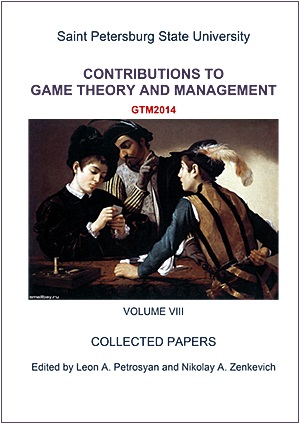Network Game with Production and Knowledge Externalities
Abstract
We consider a game equilibrium in a network in each node of which an economy is described by the simple two-period model of endogenous growth with production and knowledge externalities. Each node of the network obtains an externality produced by the sum of knowledge in neighbor nodes. Uniqueness of the inner equilibrium is proved. Three ways of behavior of each agent are distinguished: active, passive, hyperactive. Behavior of agents in dependence on received externalities is studied. It is shown that the equilibrium depends on the network structure. We study the role of passive agents; in particular, possibilities of connection of components of active agents through components of passive agents. A notion of type of node is introduced and classification of networks based on this notion is provided. It is shown that the inner equilibrium depends not on the size of network but on its structure in terms of the types of nodes, and in similar networks of different size agents of the same type behave in similar way.
Keywords:
network, structure of network, network game, Nash equilibrium, externality, network formation
Downloads
References
Downloads
Published
How to Cite
Issue
Section
License
Articles of "Contributions to Game Theory and Management" are open access distributed under the terms of the License Agreement with Saint Petersburg State University, which permits to the authors unrestricted distribution and self-archiving free of charge.




